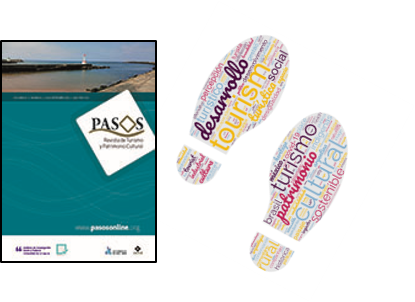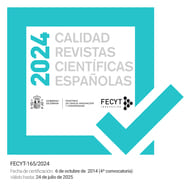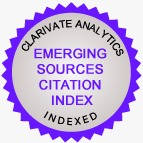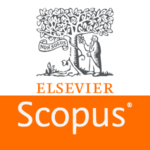Cultural tourism, heritage and local communities: the case of Cabildo (Buenos Aires, Argentina)
DOI:
https://doi.org/10.25145/j.pasos.2023.21.042Keywords:
Cultural tourism, heritage, cultural landscape, community participation, local development, ArgentinaAbstract
Tourist activity in lower-ranking communities activates complex processes of heritage, such as those observed in the town of Cabildo, Buenos Aires, Argentina. The work began in 2012 to design a community cultural tourist circuit. Perceptions about heritage and the cultural landscape were defined through participatory action research. The results indicated dissimilar identity references between the selected age groups (older adults, adults, adolescents) and configurations of the heritage and cultural landscape particular to each sector, information that favored the design of a collective tourist circuit. This participatory experience allows us to discuss the participation of state agencies in the promotion and articulation of community proposals and reflect on these axes: is it possible to build an intergenerational heritage from cultural tourism? How do public bodies work and what role do they play?
Downloads
Publication Facts
Reviewer profiles N/A
Author statements
- Academic society
- PASOS. Revista de Turismo y Patrimonio Cultural
- Publisher
- Instituto Universitario de Investigación Social y Turismo. Universidad de La Laguna (España) - Instituto Universitario da Maia ISMAI (Portugal)
References
Achilli, E. 2017. “Construcción de conocimientos antropológicos y coinvestigacion etnográfica. Problemas y desafíos”. Cuadernos de Antropología Social, 45: 7-20. https://doi.org/10.34096/cas.i45.3795
Albarrán Periáñez, J.D. 2016. El concepto de Patrimonio Territorial: problemáticas de gestión y planificación turística. In: Blàzquez, M., Mir-Gual, M., Murray, I. y Pons, G.X. (eds.). Turismo y crisis, turismo colaborativo y ecoturismo. XV Coloquio de Geografía del Turismo, el Ocio y la Recreación de la AGE. Mon. Soc. Hist. Nat. Balears, 23: 67-78.
Behling Oliveira M. y Lemos Ribeiro D. 2019. "Patrimônios Afectivos: Um Novo Recurso para o Turismo em Morro Redondo-RS, Brasil”. Revista Rosados Ventos - Turismo e Hospitalidade, 11 (4): 847-860. http://dx.doi.org/10.18226/21789061.v11i4p847
Bustos Cara R. (2004) “Patrimonialización de valores territoriales. Turismo, sistemas productivos y desarrollo local”. Aportes y Transferencias, 8 (2): 11-24. http://nulan.mdp.edu.ar/287/1/Apo2004a8v2pp11-24.pdf
Cadena Iñiguez P., Rendón-Medel, R., Aguilar-Ávila, J., Salinas-Cruz, E., de la Cruz-Morales, F., Sangerman-Jarquín, D. 2017. “Métodos cuantitativos, métodos cualitativos o su combinación en la investigación: un acercamiento en las ciencias sociales”. Revista Mexicana de Ciencias Agrícolas, 8 (7): 1603-1617.
Candau, J. 2002. Antropología de la memoria. Buenos Aires: Nueva Visión.
Capel H. 2016. “Las ciencias sociales y el estudio del territorio”. Biblio 3W.Revista bibliográfica de geografía y ciencias sociales, XXI (1149).http://www.ub.es/geocrit/b3w1149.pdf
Contreras, R. 2002. “La Investigación Acción Participativa (IAP): revisando sus metodologías y sus potencialidades. En Durston, J. y Miranda, F. (comps.), Experiencias y metodología de la investigación participativa (pp. 9-17). Santiago de Chile: CEPAL.
Dietz, G. 2012. “Reflexividad y diálogo en etnografía colaborativa: el acompañamiento etnográfico de una institución educativa "intercultural" mexicana”. Revista de Antropología Social, 21:63-91. https://doi.org/10.5209/rev_RASO.2012.v21.40050
Endere, M. L, 2016. “Los dilemas del patrimonio cultural en el siglo XXI. Elemento para una discusión”, Ítems del CIEP, I: 48 - 62, http://ojs.fch.unicen.edu.ar/index.php/ciep/about
Espeso -Molinero, P. 2019. “Tendencias del turismo cultural, PASOS. Revista de Turismo y Patrimonio Cultural,17 (6): 1101-1112. https://doi.org/10.25145/j.pasos.2019.17.076
Fals Borda, O. 2007. “La investigación-acción en convergencias disciplinarias”. Latin American Studies Association Forum, 37 (4): 17-22.
García Canclini, N. 1999. “Los usos sociales del Patrimonio Cultural”. En Encarnación Aguilar (ed.), Patrimonio Etnológico. Nuevas perspectivas de estudio (16-33). Granada: Consejería de Cultura de la Junta de Andalucía.
Giop, M. y Flores, F. (2017). Discursos patrimoniales y narrativas espaciales. Historias de una localidad lujanense (Buenos Aires, Argentina) (1864-2016). En II Congreso Internacional de Geografía Urbana. Luján: Universidad Nacional de Luján.
Guber, R. 2005. El salvaje metropolitano. Reconstrucción del conocimiento social en el trabajo de campo. Buenos Aires: PAIDÓS.
INDEC. 1980. Censo Nacional de Población, Hogares y Viviendas. Buenos Aires: Instituto Nacional de Estadísticas y Censo.
Halbwachs, M. 2004. La memoria colectiva. Zaragoza, España: Prensas Universitarias de Zaragoza.
http://www.estadistica.ec.gba.gov.ar/dpe/images/Censo1980.pdf
INDEC 2010 Censo Nacional de Población, Hogares y Viviendas. Instituto Nacional de Estadísticas y Censo, Argentina, https://www.indec.gob.ar/indec/web/Nivel4-Tema-2-41-135
Light, D. 2015. “Heritage and Tourism”. En Emma Waterton y Steve Watson (Eds.), The Palgrave Handbook of Contemporary Heritage Research, (pp. 144-158). Londres: Palgrave Macmillan. https://doi.org/10.1057/9781137293565_9
Mancini, C.E. y Perez Winter C.V. 2021. “El patrimonio cultural en tiempos de turismo comunitario: relecturas, tensiones y reformulaciones”. Revista de Turismo e Identidad 2 (2): 67-98. https://orcid.org/0000-0003-0221-0602
Neal, C. 2015. “Heritage and Participation”. En Emma Waterton y Steve Watson (Eds.), The Palgrave Handbook of Contemporary Heritage Research (pp. 346-365). Londres: Palgrave Macmillan. https://www.academia.edu/11476042/THE_PALGRAVE_HANDBOOK_OF_CONTEMPORARY_HERITAGE_RESEARCH
Oppermann, M. 2000. “Triangulation-A methodological discussion”. International Journal of Tourism Research, 2 (2): 141-146. https://doi.org/10.1002/(SICI)1522-1970(200003/04)2:2<141::AID-JTR217>3.0.CO;2-U
Pérez Winter, C. 2019. “El “retorno al campo” desde la mirada local. Redescubriendo los atractivos patrimoniales pampeano ‑bonaerenses (Argentina)”. PASOS. Revista de Turismo y Patrimonio Cultural, 17 (4): 779‑793. https://doi.org/10.25145/j.pasos.2019.17.054
Pinassi, A. 2017. Patrimonio cultural, turismo y recreación. El espacio vivido de los bahienses desde una perspectiva geográfica. Bahía Blanca: EDIUNS.
Prats, Ll. 2000. “El concepto de patrimonio cultural”. Cuadernos de Antropología Social, 11: 115-136. https://doi.org/10.34096/cas.i11.4709
Prats, L. 2005. “Concepto y gestión del patrimonio local”. Cuadernos de Antropología Social 21: 17-35. https://doi.org/10.34096/cas.i21.4464
Prats, Ll. 2011. “La viabilidad turística del patrimonio”. PASOS. Revista de Turismo y Patrimonio Cultural, 9 (2): 249-264. http://pasosonline.org/Publicados/9211/PS0211_03.pdf
Pupio, A. y Tomassini H. 2020. “Tomar la fábrica, recuperar la historia. Memorias, paisajes y patrimonios en un frigorífico recuperado (Bahía Blanca, Argentina)”, Revista Del Museo De Antropología, 13 (3): 39–52. https://doi.org/10.31048/1852.4826.v13.n3.27732
Sather-Wagstaff, J. 2015. “Heritage and Memory.” En E. Waterton y S. Watson (editores), The palgrave handbook of contemporary heritage research (pp. 191-204). Londres, Inglaterra:Pelgrave Macmillian.
Suden, C. 2022. “Paisaje cultural patrimonializado: conceptos y aportes sobre la base de áreas observadas en el área metropolitana de Mendoza, Argentina”. PASOS. Revista de Turismo y Patrimonio Cultural, 20 (2): 435-452. https://doi.org/10.25145/j.pasos.2022.20.031
Toselli, C. 2006. “Algunas reflexiones sobre el turismo cultural”. PASOS. Revista de Turismo y Patrimonio Cultural, 4 (2): 175-182. https://www.pasosonline.org/Publicados/4206/PS040206.pdf
Toselli C. 2019. “Turismo, patrimonio cultural y desarrollo local. Evaluación del potencial turístico de aldeas rurales en la provincia de Entre Ríos, Argentina”. PASOS. Revista de Turismo y Patrimonio Cultural, 17 (2): 343-361. https://doi.org/10.25145/j.pasos.2019.17.024
Vigier H., Beier L. y Murello D. 2014. “El turismo en el sudoeste bonaerense: análisis de los eslabones que integran la cadena de valor”. Revista Turismo y Desarrollo Social TURyDES, 7 (17): 1-16. file:///D:/Downloads/Dialnet-ElTurismoEnElSudoesteBonaerense-8146192.pdf
World Tourism Organization (2018). Tourism and Culture Synergies, UNWTO, Madrid, DOI: https://doi.org/10.18111/9789284418978.
Zamorano Casal, F. 2008. Turismo alternativo: servicios turísticos diferenciados. México: Editorial Trillas.
Downloads
Published
How to Cite
Issue
Section
License
Copyright (c) 2022 Eunice Canclini, Alejandra Pupio, Roberto Bustos Cara

This work is licensed under a Creative Commons Attribution-NonCommercial-NoDerivatives 4.0 International License.
I confirm that the work is original (of my/our authorship), and that it will not be submitted to other journals or publications until the final resolution of the review process in PASOS, RTPC.
I authorize the publication of my work by PASOS, PSTN of free and open access in any of the formats that I deem appropriate, for an indefinite period of time and as a non-remunerated collaboration.
Likewise, the author(s) understands that the published work may be linked or deposited on any server or included in other publications (republication), provided that the new place and/or new edition references the original publication and acknowledges the authorship and copyright ownership of PASOS RTPC publications.
Authors understand that a plagiarism-self-plagiarism check will be performed, and the article may be removed at any time from the editorial flow.










